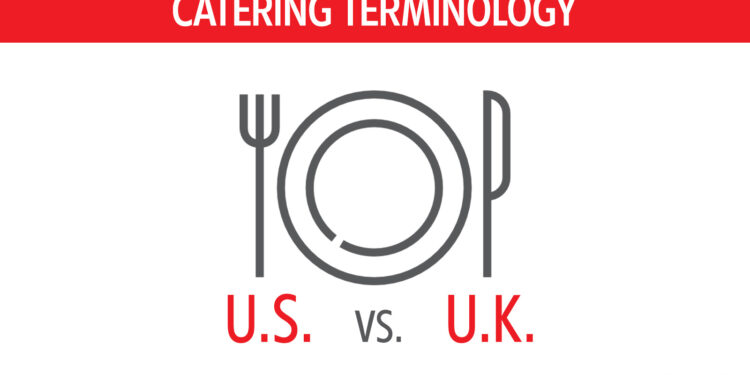Understanding Food Terminology – Differences between the United Kingdom and the United States

This is a post by author Tom Hayes. Tom is the Customer Service Manager for Air Culinaire Worldwide, headquartered in Tampa, Florida, with kitchens in Aspen, Colorado; Boston, Massachusetts; Chicago, Illinois; Dallas, Texas; Denver, Colorado; Las Vegas, Nevada; London, U.K.; Los Angeles, California; Miami/Ft. Lauderdale, Florida; Miami, Florida; New York, New York; Paris, France; San Francisco, California; San Jose, California; Seattle, Washington; Tampa, Florida; Van Nuys, California; Washington, D.C.; and West Palm Beach, Florida. Also, Air Culinaire Worldwide provides in-flight catering services at hundreds of airports around the world via hundreds of catering partners. Tom is an expert in all areas of in-flight catering for business aviation and can be contacted at tomhayes@airculinaire.com.
It’s important to be very specific when ordering catering. Be mindful that any part of a catering order can be misinterpreted without a clear understanding on both sides. Differences in terminology, even between the UK and U.S. can result in catering outcomes that may not be what the passenger expects.
The following is an overview of what you need to know:
1. Words do not always have the same meaning
Even though the UK and the U.S. speak the same language, this does not always mean that words have the same meaning. This is particularly true in the world of in-flight catering. Order a chicken salad sandwich in the U.S. and you’ll get diced chicken with mayonnaise. In the UK you’ll end up with sliced chicken breast with assorted greens. While the difference is not huge you may need to explain to the passenger why the dish is not as expected.
2. Different names can be confusing
Ordering a Mimosa in the U.S. is the same as ordering a Bucks Fizz in the UK. A Waldorf salad is understood in the U.S., but caterers in the UK may never have heard of this before. Other examples are arugula (U.S.) and rocket (UK), lox (U.S.) and smoked salmon (UK), and pepper (U.S.) vs. capsicum (UK).
3. Be specific when ordering
The more specific you are with your in-flight caterer, and vice versa, the less likely there will be any confusion. We recommend that the flight attendant make a quick phone call to the caterer after placing an order to go through the various elements of the order and ensure everything is clear.
4. The subject of sandwiches
Ever since the 4th Earl of Sandwich, John Montagu, came up with the idea of the sandwich in 1770, there are still no standards as to exactly what a sandwich is. UK sandwiches are typically served in triangles with salad and condiments on each piece. Many U.S. passengers, however, prefer their sandwiches with salad and condiments on the side and the sandwiches cut in halves. If you request sandwiches with “condiments on the side” in the UK you’ll usually end up with triangular sandwiches with salad and dressing separate. Here in the UK we tend to offer both “standard” and “U.S. style” sandwiches.
5. Quantity and portion sizes
U.S. portion sizes are often much larger than UK and European portion sizes. Many European customers are accustomed to smaller portions and may find U.S. portion sizes much too large. Knowledge of quantity and portion size is important when ordering catering in different countries. Clear communication can lead to less waste and, most importantly, more accurate invoicing.
6. Don’t be afraid to ask questions
It is important that both the flight attendant and the caterer understand exactly what the passengers want. The key is to ask questions and make sure there’s absolutely no confusion. Asking questions makes the caterer’s job, and the crew’s needs, easier to handle. And, remember that the internet is an excellent resource to look up any terms of which you may need added clarity.
Conclusion
When ordering catering in the UK or in the U.S. as the case may be, an experienced in-flight caterer will work the order around the specifications provided by the flight attendant. The key, of course, is that both the flight attendant and the caterer are “of one mind” in understanding exactly what the passengers want.
Questions?
If you have any questions about this article or would like assistance with your catering request for the UK, contact me at tomhayes@airculinaire.com.




